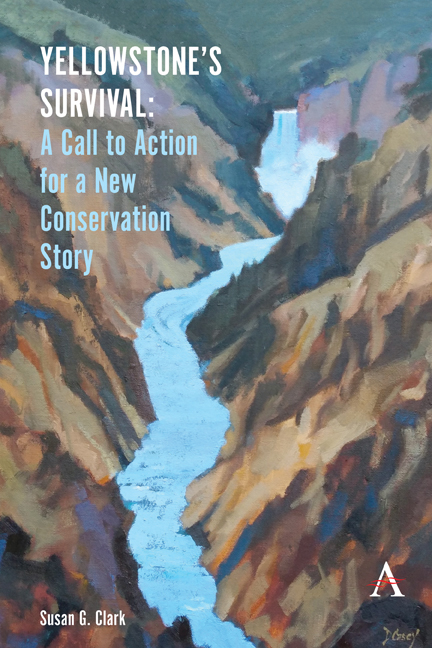 Yellowstone's Survival - A Call to Action for a New Conservation Story
Yellowstone's Survival - A Call to Action for a New Conservation Story Published online by Cambridge University Press: 22 May 2021
The problems we are worried about are caused
not just by other people but by ourselves.
As we experience and learn more about the Greater Yellowstone Ecosystem (GYE), we are easily captivated by its beauty and importance. When visiting, travelers and residents alike are sure to see herds of bison and elk. They can go from one roadside vista to the next breathtaking view in minutes. There are limitless opportunities to experience the park and its animals either by car or on hiking trails. Visitors may decide to eat ice cream at Tower Falls or relax on the front porch at Roosevelt Lodge. Those looking for adventure can catch a stunning view of the Teton Mountains from the top of Mount Washburn. Many even get to see grizzly bears and wolves. While all these opportunities are “out there,” experiencing them is an internal, personal process— a psychological and perhaps transcendent one.
People do not arrive at YNP as blank slates. Each person is influenced by their own background, personality, and knowledge base that affect what they choose to see, how they feel, and how they make meaning of it all. This is true for both residents of GYE and short-term visitors who visit the parks or other parts of the ecosystem. We each value things differently. We are at different stages of experience, existential maturity, and adult development. We vary in our reflectivity, insights, and judgment. We show differing degrees of emotional intelligence or sensitivity to our surroundings. All of these dimensions influence how we interpret our GYE experience.
We are the center of our own stories of meaning. After our Yellowstone experiences, we may tell our friends about our trip and show them pictures. This is one way of creating and sharing our meaning of the GYE. As I discussed in the last chapter, the many controversies so evident now in the GYE are really amplifications of our colliding stories of meaning. In the end, this boils down to our individual psychology and social living. It is likely that the future of GYE's wildlife will hinge less on wildlife itself and more on our own psychology, sociology, and philosophy. Consequently, in this chapter we will range widely and generally over psychology, philosophy, and history, gaining perhaps new knowledge and perspective on people and their behavior in GYE.
To save this book to your Kindle, first ensure no-reply@cambridge.org is added to your Approved Personal Document E-mail List under your Personal Document Settings on the Manage Your Content and Devices page of your Amazon account. Then enter the ‘name’ part of your Kindle email address below. Find out more about saving to your Kindle.
Note you can select to save to either the @free.kindle.com or @kindle.com variations. ‘@free.kindle.com’ emails are free but can only be saved to your device when it is connected to wi-fi. ‘@kindle.com’ emails can be delivered even when you are not connected to wi-fi, but note that service fees apply.
Find out more about the Kindle Personal Document Service.
To save content items to your account, please confirm that you agree to abide by our usage policies. If this is the first time you use this feature, you will be asked to authorise Cambridge Core to connect with your account. Find out more about saving content to Dropbox.
To save content items to your account, please confirm that you agree to abide by our usage policies. If this is the first time you use this feature, you will be asked to authorise Cambridge Core to connect with your account. Find out more about saving content to Google Drive.